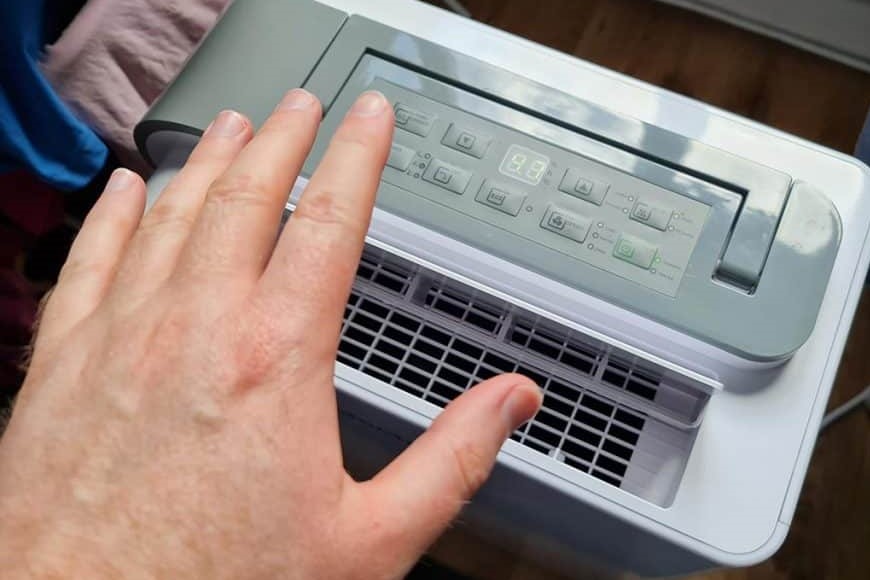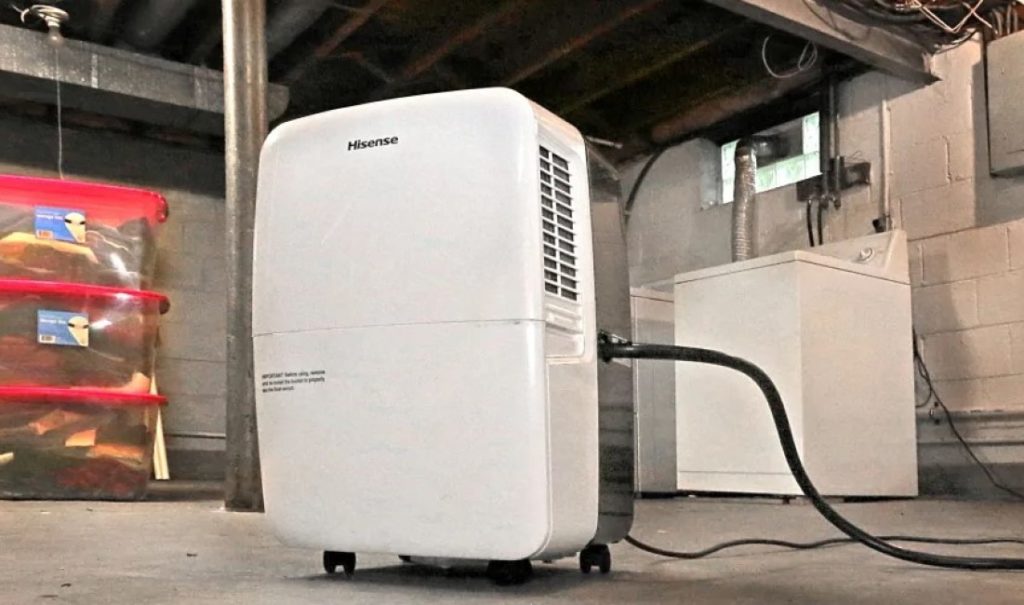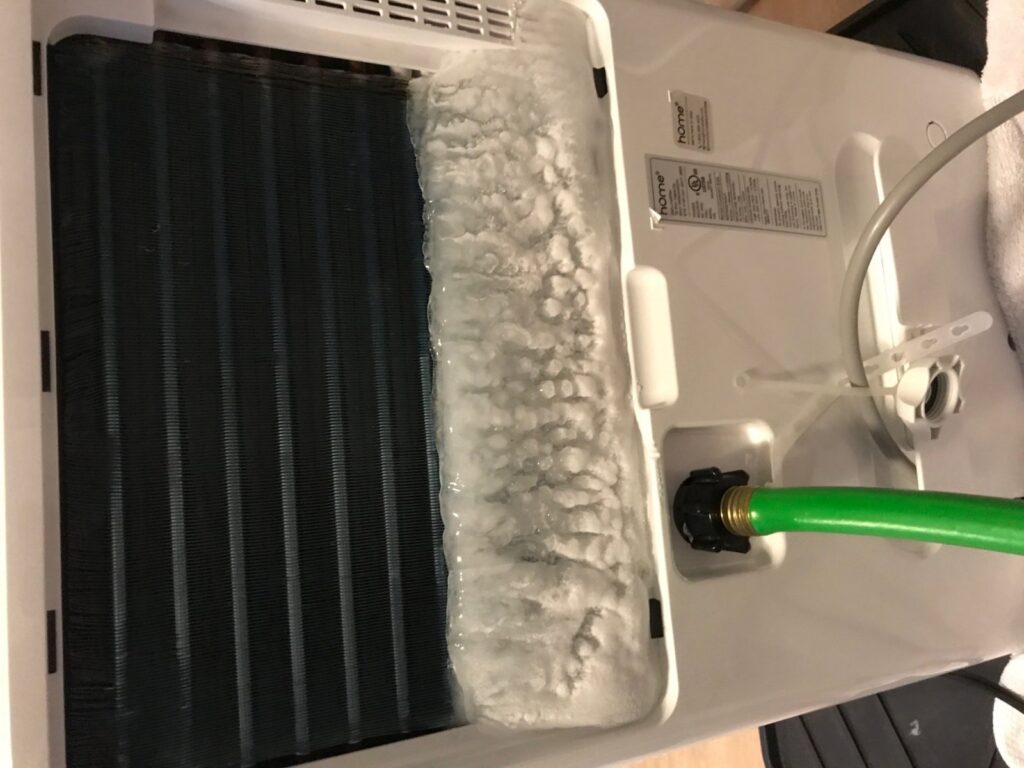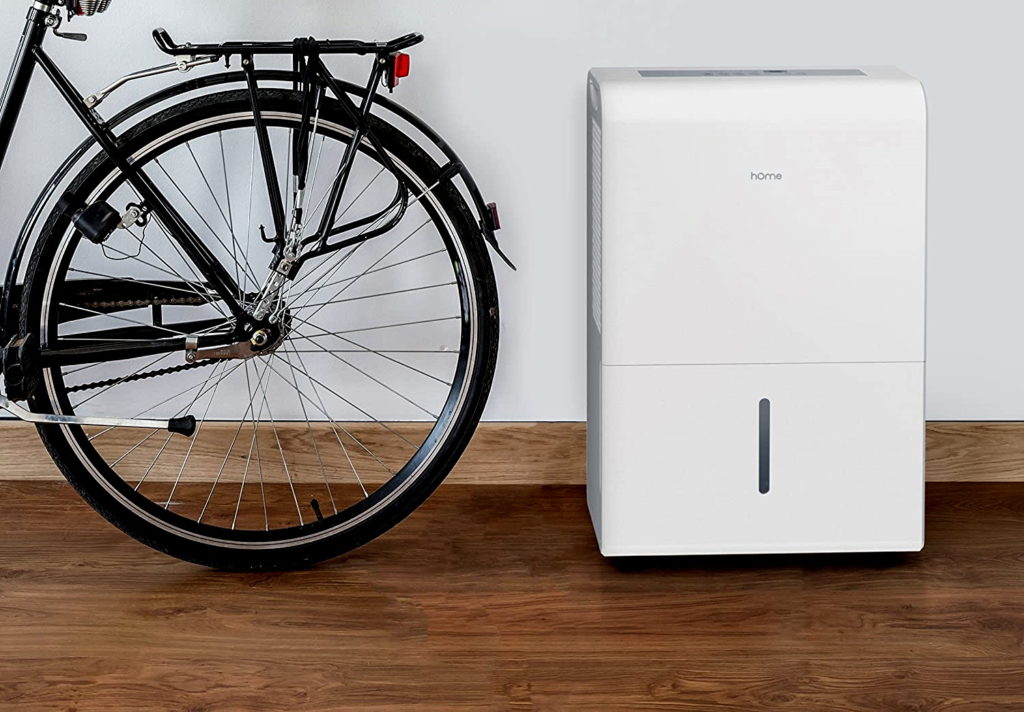

Condensation and corrosion on firearms and workshop tools, mold on walls, hypothermia in human beings – high humidity is the bane of existence for many living and nonliving things! A dehumidifier can however bring relief.
However, if they are very efficient, their purchase prices but especially their electricity consumption are likely to put you off. Can’t we just turn up the heat, ventilate more frequently and for longer?
The fear of an overly large bill can hold back many people, especially with electricity prices rising every year. That’s why you have to control how you use the dehumidifier. So, how long should a dehumidifier run per day?
For the first few days, the dehumidifier can be operated continuously for 12 hours until relative humidity is obtained. Then, once you have succeeded in reaching the appropriate humidity level, you will have to start it up every day, but only for a few hours. The objective here will be to keep the air fairly dry (between 45 and 65% humidity).
Saving cost by simply cutting the runtime of a humidifier down to 12 hours a day isn’t always effective. You may end up under-dehumidifying or over-dehumidifying when you could have left it to run for a longer or reduced time. This is because how soon you get to the optimal humidity level is determined by the room size, the dehumidifier capacity, the existing relative humidity, the device’s extraction rate. Also, how much you leave it to run depends on the energy usage and the cost of power per kilowatt. The important factors are analyzed below:
How fast a dehumidifier can do its work is what will determine if it can be switched off after a few hours of use or not. The relative humidity (HR) factor Trusted Source Humidity - Wikipedia Relative humidity, expressed as a percentage, indicates a present state of absolute humidity relative to a maximum humidity given the same temperature. en.m.wikipedia.org , the place of use or size of the room, as well as the size of the dehumidifier are the first factors to consider to get a good dehumidifier that can be run efficiently but for a period of time every day.
The efficiency of a dehumidifier depends mainly on its extraction capacity and its airflow. You should know that the extraction capacity of air dehumidifiers are generally measured under the same conditions: relative humidity and temperature.
This standard, which makes it possible to compare the different devices with each other, therefore involves taking into account certain data (humidity, temperature, size of the room to be treated) before making your choice, because you will agree that there is a huge difference between a dehumidifier for an RV or a basement.
The recommended relative humidity for a room for good health and comfort is 30 to 50%, according to Mayo Clinic. At around 70% or more on a long-run, then you’re going to start noticing mold.
So, when your dehumidifier can bring the air to that level, you can stop the unit to save energy. However, to best manage this situation, you’ll need a built-in hygrostat to monitor the relative humidity and a timer to schedule start-up time and stop time.
The size factor of the unit also determines how much time you can make the unit run. A portable model such as the Pro Breeze Electric Mini Dehumidifier in a 300 sq. ft. room will be incompatible and will have to be kept running almost every hour, while still not bringing the relative humidity to the required level.
Meanwhile, there are models with up to 4,500 sq. ft. capacity such as the hOmeLabs Energy Star Dehumidifier. These types can handle medium to large rooms measuring and thus be set to automatically shut off after meeting the humidity goals.
The tank capacity is also important in determining how long the device runs. It is in the tank that the water collected after air dehumidification is evacuated and stored. The capacity of this tank therefore indicates the maximum quantity of water that it can contain. As all the devices stop automatically when the tank is full, the tank capacity is important if it cannot be emptied regularly.
It is not easy to calculate the autonomy of use of a dehumidifier because the speed of the filling of the tank will depend on the efficiency of the dehumidifier (extraction capacity, air flow) and the humidity rate which will decrease over time.
The extraction rate is the number of liters of water that the dehumidifier can remove during a given period (generally over a day or 1 hour). The extraction capacity is therefore expressed in liters per day or liters per hour. Remember that this is generally measured in an atmosphere with a temperature of 30°C and relative humidity of 80% (for condensing dehumidifiers).
Note: the extraction capacity of adsorption dehumidifiers is much lower than that of condensation dehumidifiers but will remain the same regardless of the operating temperature (from 1 ° C).
The extraction rate depends above all on the temperature of use, the rate of humidity observed, the speed of dehumidification desired and the volume of air to be treated. It should be chosen according to the surface of the room in which the dehumidifier will be installed.
There are on the market small air dehumidifiers that can extract 0.5 liters of water per day (for cupboards or motorhomes). There are devices with an extraction capacity of 100 liters of water (or even plus) per 24 hours. These are recommended for warehouses, storage rooms, gyms, or swimming pools. Air dehumidifiers with an extraction cóapacity of between 5 to 30 liters per day are the most suitable for domestic use and will do the job faster, saving energy.
The energy consumption of a dehumidifier will determine how long you can keep it on to save money. Some portable dehumidifiers with up to 300 square feet capacity may not take a heavy toll on your electricity bill but models with up to 4,500 square feet capacity will definitely do. Hence, their runtime must be managed with functions such as the timer, auto shut-off, and hygrometer.
One of the ways to minimize dehumidifier runtime is by monitoring the unit, possibly with a hygrometer, which is built into many units. After the dehumidifier reaches the desired level, it shuts off.
Whether manual or electric, the hygrostat allows you to choose the humidity rate you want to obtain and maintain in the room to be dehumidified. This function is therefore essential for residential premises in which it is necessary to maintain a constant or stable humidity level. It is important for economic reasons that the device does not operate permanently.
In practice, when the excess humidity has been removed (once the “set” humidity level has been reached), the air dehumidifier equipped with a hygrostat will stop dehumidifying. According to the manufacturers, either the device will stop completely or it will remain in ventilation mode, only working with very low consumption.
The electronic hygrostat has the advantage of being more practical to use. It more easily defines the set point rate of the desired humidity rate. On the other hand, the electronic hygrostat does not always allow “automatic restart” in the event of a power cut and then resumption, which is very practical in particular in a second home or when one is not permanently present.
Dehumidification can take anywhere from a few hours to a few days. Most of them run the dehumidifier regularly or continuously. At first use, it may work for up to a 24-hour cycle. However, for continuous use, you may run the unit for 12 hours a day, provided the power of the device is equivalent to the room size.
Answering the question: how long should a dehumidifier run per day is hinged on so many factors as we have seen. The duration of the dehumidification process depends on the air temperature, relative humidity, room size, and system performance. The multitude of these factors makes it very difficult to estimate the duration of dehumidification.
As we have seen, we’re not going to be using it for much time after all, unless we have a big, very humid house. Only the first few times will require intensive use, then, continuous use will be for maintaining relative humidity, therefore less power consumption.





